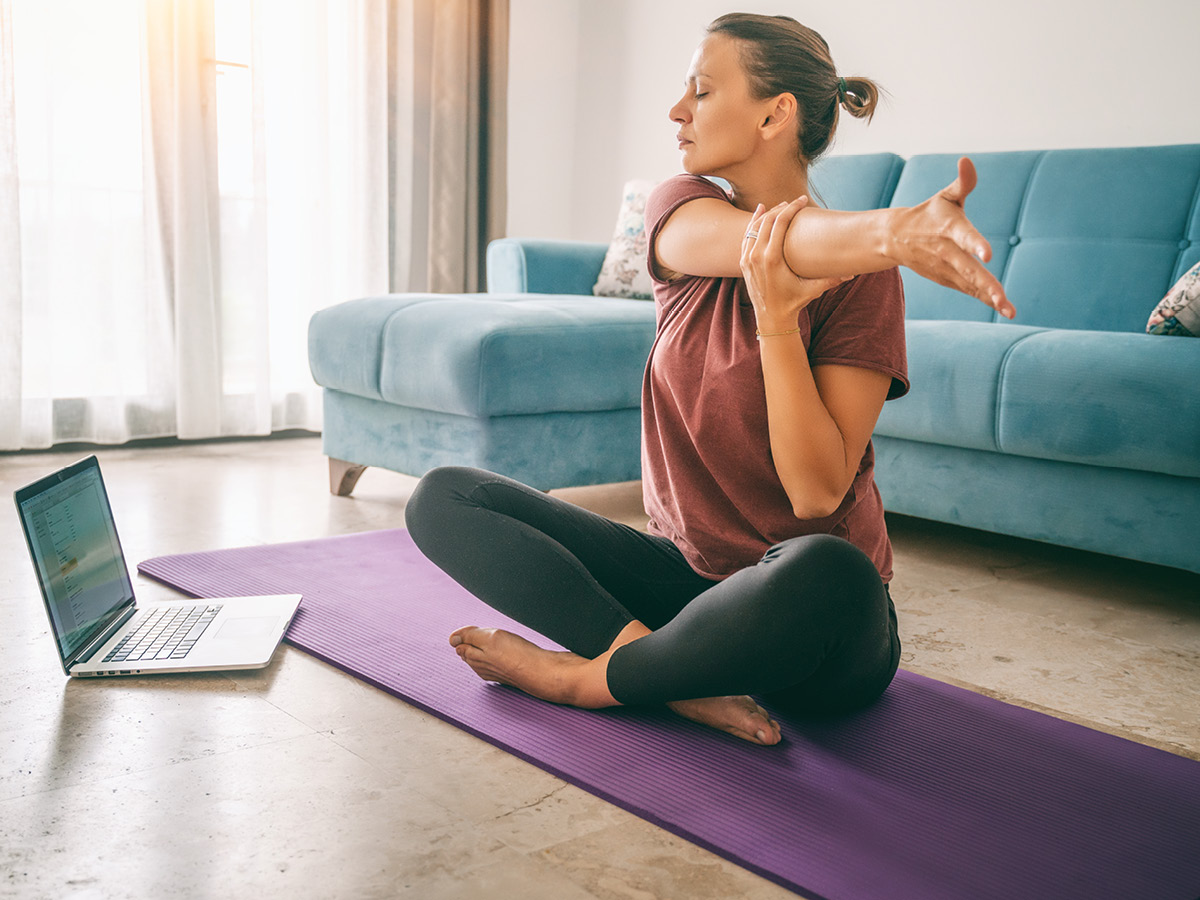Maintain your mental health while working from home

Lockdowns and long periods of working from home have had an impact on many of us – and, with the lines between work and home blurred more than ever, it is important that we take care of our mental health.
Many Canadians are working from home and may be struggling to create a work-life balance since it can be challenging to enforce a clear beginning and end to their workday. If you’re not mindful about setting limits, it could lead to burnout and other mental health issues. Here are a few practical tips to help you take good care of yourself during these difficult times.
Create your own space
Working at a kitchen table or from the couch isn’t ideal, so try creating a dedicated work area in your home. If space is at a premium, consider using a hallway nook as your office for example. You can also divide a room with a barrier and create your own cubicle. Having an ‘office’ to go to may help establish your new routine and, in turn, limit the anxiety you may be feeling about adapting to the constant changes around you.
Also be sure to bring in some personal touches. Add art and photographs. Invest in comfortable office furniture. Making the space your own and distinct from your personal life may help keep you motivated each day. For peace of mind, if you’re investing in new office furniture and equipment, talk to your home insurer to ensure you have enough coverage.
Create new rituals
You may have hated your commute, but those idle minutes spent in transit were part of your routine. It’s important to build in a similar routine to that of your pre-pandemic day to day while working from home. How? For example, go for a morning walk before starting your workday. Create a definitive way to mark the end of your workday. Have a favourite drink or something to eat, catch up with your friends, go for a walk, etc. It’s small rituals like these that can help set boundaries.
Keep office hours
To keep working hours in check, try to set flexible working times that suit your lifestyle. With the agreement of your manager, set limits by scheduling “office hours” and let coworkers know when you can be reached to discuss work issues. Without the structure of a typical workday, it’s easy to lose track of time. These small measures may help remove the pressure and sense of obligation that you must be available at any time.
Schedule your communications
If you’re working at unconventional hours by choice, it is preferable to not send team emails at off-hours since it implies you’re available at all hours for work and it could also put pressure on coworkers to do the same. If your email software allows it, schedule your outgoing emails to be sent during the regular workday. This would respect your colleagues’ boundaries and enhance your flexibility.
Prioritize your work
Start your day by focusing on your primary tasks then move on to the less pressing items later. It’s easy to get sucked into responding to emails and unnecessary meetings. It’s more important than ever to preserve your mental energy and prioritize your work.
Move your body
Many of us are walking a lot less than we used to. It takes discipline to do it, but try your best to get some movement in. Carve out time for fitness breaks, whether it’s a short walk, a bicycle ride, or just stretching your legs once in a while. You may feel mentally and physically better.
Stay connected
Working from home can be lonely and many of us are missing our day to day in-person interactions. Get creative with your work friends and schedule virtual ‘water-cooler’ meetings or after work virtual get-togethers. To emulate the feeling of working beside someone, you can also try to work as though you are next to each other by having your video on. Hearing someone typing away and working next to you can be motivating and the instant accessibility can make it feel as if they’re in the same room. You might be stuck at home, but you don’t have to work in isolation.
Shut it down
Avoid falling into the trap of working longer hours because your office is so close. Treat your home office the same as you would treat an office that you commute to each day. If possible, at the end of your day, switch off your work-related devices, activate your “out of office” email, and close your office door.
Sources
How to Create a Routine that Supports Good Mental Health
https://psychcentral.com/blog/imperfect/2017/01/routine-that-supports-good-mental-health
https://blog.doist.com/end-work-day/
These tips are provided for information and prevention purposes only. They are general in nature, and The Personal cannot be held liable for them. We recommend using caution and consulting an expert for comprehensive, tailored advice.
